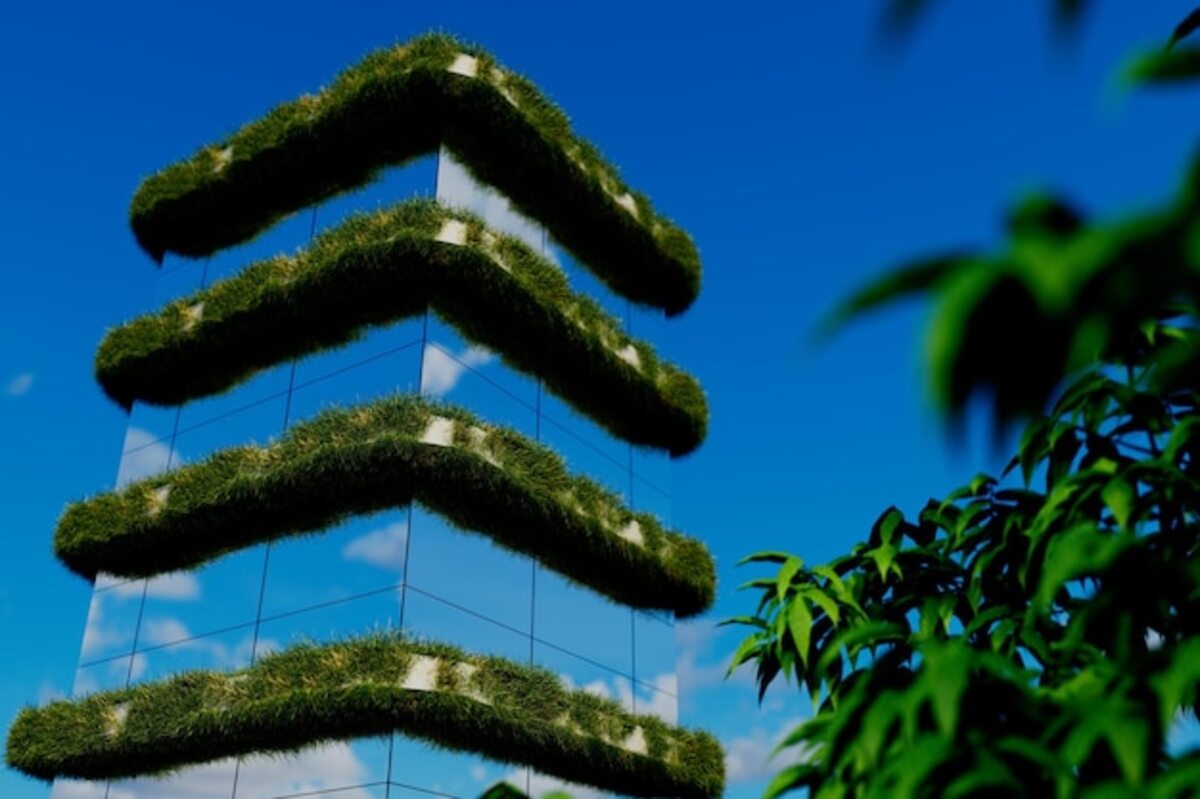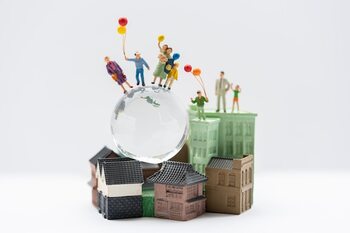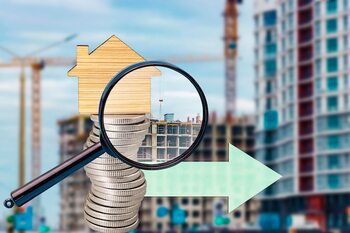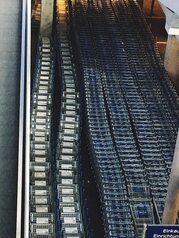The relevance of green infrastructure in real estate appreciation

Green infrastructure has become a vital factor for real estate appreciation in Costa Rica. Integrating green spaces, such as parks and gardens, not only improves the quality of life for residents but also raises property values. In a market where sustainability is increasingly valued, understanding how these elements impact real estate investment is crucial for any buyer or seller. This article will explore why investing in green infrastructure may be your best decision in the real estate sector.
1. Definition of green infrastructure: What is it and why does it matter?
Green infrastructure refers to a set of natural and artificial elements that integrate green spaces in urban environments, such as parks, gardens, green roofs, and ecological corridors. This approach not only seeks to beautify spaces but also offers a range of environmental and social benefits. By incorporating vegetation in urban areas, biodiversity is promoted, air quality is improved, and the urban heat island effect is mitigated. Furthermore, these spaces provide places for recreation and leisure for citizens, fostering a healthier and more balanced lifestyle. The importance of green infrastructure lies in its ability to transform the urban environment and elevate the quality of life in communities. In real estate terms, properties close to green areas tend to have significantly higher added value. This is because buyers increasingly value sustainable and healthy features when purchasing a property. Additionally, the presence of green spaces can influence stress reduction and improve social cohesion among neighbors, creating a sense of belonging that further enhances the appeal of the place to live and invest.
2. Environmental benefits: The positive impact on the local ecosystem.
The implementation of green infrastructure not only transforms the aesthetics of an urban environment but also plays a fundamental role in maintaining and enhancing the local ecosystem. By integrating green spaces such as parks, gardens, and green roofs, biodiversity is promoted, providing habitats for various species of flora and fauna. This increase in biodiversity not only benefits local organisms but also contributes to the resilience of the ecosystem against climate change and natural disasters. The presence of green areas acts as a refuge for birds and pollinator insects, essential elements for ecological balance and food production.
In addition, green spaces have a significant impact on air quality and urban temperature regulation. Plants absorb carbon dioxide and release oxygen, thereby improving the air quality for both residents and visitors. Additionally, by contributing to the reduction of the "heat island" effect in cities, these spaces help moderate temperatures during the warmer months. Green infrastructure can also decrease stormwater runoff through its capacity to retain water, which reduces the risk of flooding and improves water management. Together, these environmental benefits not only enrich the local environment but also significantly increase the appeal and real estate value of surrounding properties.
3. Green infrastructure and public health: An undeniable link.
Green infrastructure not only beautifies the urban environment but also has a direct and positive impact on public health. Studies have shown that green spaces, such as parks and recreational areas, encourage more active lifestyles, which in turn reduces the incidence of chronic diseases and improves the mental health of residents. By providing a conducive environment for outdoor activities, communities are encouraged to interact with their surroundings, thus promoting greater social cohesion and overall well-being. This connection between green infrastructure and public health highlights the importance of prioritizing these spaces in real estate development.
Additionally, access to green spaces has been associated with a decrease in stress and an improvement in air quality, key factors for maintaining a healthy population. In environments where there is a conscious design towards sustainability, the benefits extend beyond aesthetics; they contribute to creating resilient cities in the face of climate change. Investing in green infrastructure not only represents a commitment to the environment but also a smart strategy to increase property values. Buyers are increasingly interested in living in places that offer these advantages, making green infrastructure an essential element within the current real estate landscape.
4. Case studies: Successful projects that increased property value.
One of the most emblematic cases that demonstrates the positive impact of green infrastructure on real estate value is the development of the neighborhood "La Sábana Verde" in San José. This project transformed a previously underutilized urban area into a vibrant urban ecosystem, integrating extensive green spaces, pedestrian paths, and recreational areas. As a result, it not only improved the quality of life for its residents but also led to a significant increase in the prices of surrounding properties. The demand for housing in this area grew exponentially, highlighting how conscious planning towards green initiatives can be a catalyst for economic and social development.
Another relevant example is the case of the "Bosque Urbano" project, which implemented a series of vertical gardens and green roofs on residential and commercial buildings. This innovative approach not only contributed to environmental sustainability but also created an attractive environment for tenants and potential buyers. Properties within the area showed a notable appreciation in their value, with rates exceeding the local market average. This demonstrates that investing in green infrastructure is not only beneficial for the environment but also represents a smart strategy for maximizing long-term real estate profitability.
5. How green infrastructure influences buyer behavior.
Green infrastructure not only beautifies an urban environment but also significantly influences buying decisions. Today's buyers are increasingly aware of environmental impact and seek properties that offer sustainable features. Spaces like green roofs, community gardens, and recreational areas not only enhance the aesthetics of the place but also promote a healthy and active lifestyle. This connection between nature and personal well-being translates into a preference for properties that integrate these elements, which, in turn, can result in higher demand and an increase in resale value.
Additionally, green infrastructure affects the perception of risk associated with property. Areas with abundant green spaces tend to be seen as safer and more desirable. This appeal translates into less price fluctuation even during uncertain economic periods. Buyers are willing to invest more in properties located in environments that prioritize sustainability and community well-being, as these factors are indicative of responsible and conscious development. Consequently, incorporating green infrastructure is not only a strategy to improve quality of life but also a smart financial decision for those looking to maximize their real estate investment.
6. Key elements of green infrastructure that elevate property value.
Green infrastructure encompasses a variety of elements that can transform an urban space and, consequently, increase its value. Among them are green roofs, which not only enhance the aesthetics of buildings but also contribute to energy efficiency by providing natural insulation. Additionally, the incorporation of rainwater harvesting systems and vertical gardens allows for more sustainable water management and improves air quality, making it attractive to potential buyers concerned about the environment. These elements not only beautify the property but also demonstrate a commitment to sustainable practices.
In addition to the aesthetic and functional benefits, public green spaces such as parks and pedestrian trails promote a healthier and more active community. Proximity to green areas has been associated with improvements in the physical and mental well-being of residents, which is a strong selling point in the real estate market. Properties located near parks or recreational areas tend to have higher prices due to the growing demand for healthy lifestyles. In summary, integrating these key elements not only elevates the visual appeal of a property but also strengthens its position in an increasingly sustainability-focused and quality-of-life-oriented market.
7. Strategies for investing in properties with good green infrastructure.
When considering strategies for investing in properties with good green infrastructure, it is essential to conduct a thorough analysis of the environment and sustainability projects in the area. This approach involves researching the existence of parks, community gardens, and stormwater management systems, as well as the commitment of local authorities to sustainable development. Investing in areas where green policies are being implemented or where the creation of natural spaces is anticipated can provide significant long-term advantages, as these features not only beautify the area but also contribute to the appreciation of property values.
Another effective strategy is to seek real estate developments that incorporate environmental certifications, such as LEED (Leadership in Energy and Environmental Design) or similar. These certifications ensure that buildings have been designed and constructed with sustainable practices in mind, which not only improves their energy efficiency but also attracts a growing segment of environmentally conscious buyers. Additionally, by choosing properties with these characteristics, investors can benefit from tax incentives and lower long-term maintenance demands. In summary, prioritizing green infrastructure is not only a step toward more responsible investment; it can also prove to be a financially smart decision as the demand for sustainable living spaces increases.
8. Future trends: The evolution of green infrastructure in the real estate sector.
The evolution of green infrastructure in the real estate sector is a process that reflects a significant shift in the priorities of developers and buyers. As environmental awareness grows, new constructions are incorporating elements such as green roofs, rainwater harvesting systems, and community spaces designed to promote biodiversity. These trends not only aim to reduce the ecological footprint of buildings but also create healthier and more pleasant living environments. Green spaces have become a key differentiator in a competitive market, resulting in an increase in resale value for properties with these features.
Moreover, green infrastructure is beginning to be seen as a long-term investment by real estate investors. The demand for sustainable housing continues to grow, driven by younger generations that prioritize environmental and social well-being. Cities are responding to this trend through urban policies that promote sustainable projects and the creation of accessible green spaces. Thus, the effective integration of these infrastructures is expected to not only benefit the urban environment but also generate significant economic returns by increasing real estate appreciation in the areas where they are implemented. In this context, it is clear that investing in green infrastructure is more than a trend; it is a smart strategy for the future of the real estate market.
9. Conclusions: Making informed decisions about sustainable real estate investments.
Informed decisions about sustainable real estate investments should be based on a thorough analysis of how green infrastructure impacts both the environment and the long-term value of a property. As buyers become more environmentally conscious, developments that incorporate elements such as green roofs, rainwater harvesting systems, and well-designed community spaces are gaining appeal. This not only translates to increased interest from potential tenants or buyers but can also result in significant appreciation of property values over time. In this sense, investing in sustainable real estate becomes a smart strategy for those looking to maximize their return. On the other hand, it is vital to consider location and social context when evaluating investments in green infrastructure. Areas that prioritize sustainability tend to attract more engaged and active communities, which enhances not only local quality of life but also the overall reputation of the neighborhood. When making decisions about real estate investments, it is advisable to research existing projects and their outcomes on the valuation of similar properties. This way, investors can ensure that their decisions are aligned with emerging market trends and contribute to building a more sustainable and profitable future.



